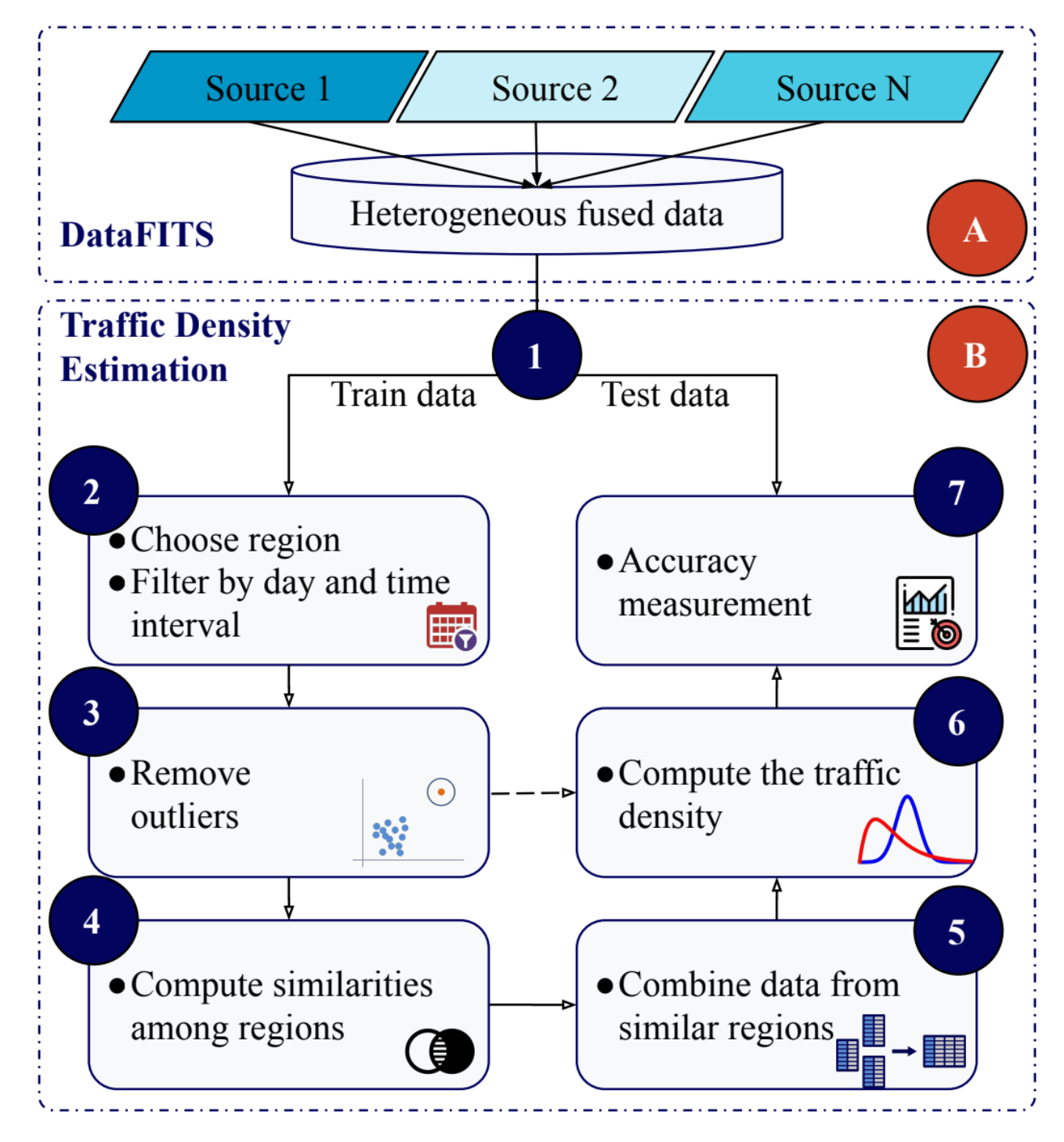Road Traffic Density Estimation Based on Heterogeneous Data Fusion
This investigation starts with the hypothesis that fusing heterogeneous data sources can increase the data coverage and improve the accuracy of traffic-related applications in Intel-ligent Transportation Systems (ITS). Therefore, we designed (i) a Data Fusion on Intelligent Transportation Systems (DataFITS) framework that allows collecting data from numerous sources and fusing them according to spatial and temporal criteria; (ii) a traffic estimation method that groups road segments into regions, identify correlations between them, and measure the traffic distribution to estimate traffic. As a result, DataFITS increased by 130% the number of road segments coverage and enhanced, by fusion process, around 35% of road overlapping data sources. We evaluate the traffic estimation of the 15 most correlated regions, where the fused data together with correlated areas resulted in the best traffic estimation accuracy by reaching up to 40% in some cases and 9% on average.
Please cite:
@INPROCEEDINGS{zibner2022road,
author={Zißner, Philipp and Rettore, Paulo H. L. and Santos, Bruno P. and Lopes, Roberto Rigolin F. and Sevenich, Peter},
booktitle={2022 IEEE Symposium on Computers and Communications (ISCC)},
title={Road Traffic Density Estimation Based on Heterogeneous Data Fusion},
year={2022},
volume={},
number={},
pages={1-6},
keywords={Measurement;Correlation;Roads;Soft sensors;Urban areas;Estimation;Data integration;ITS;Smart Cities;Traffic estimation;Data Fusion},
doi={10.1109/ISCC55528.2022.9912917}
}





Leave a comment